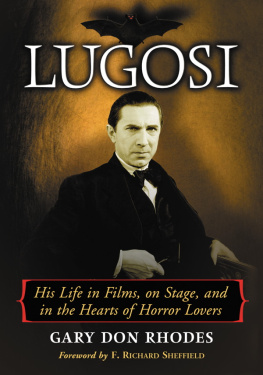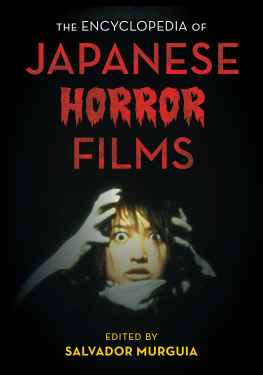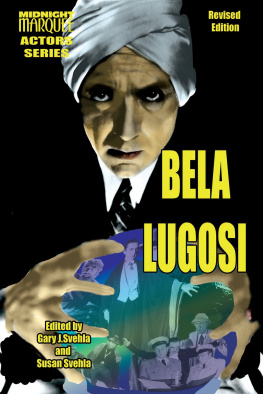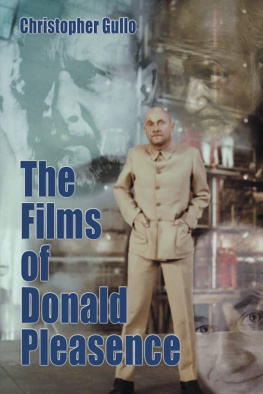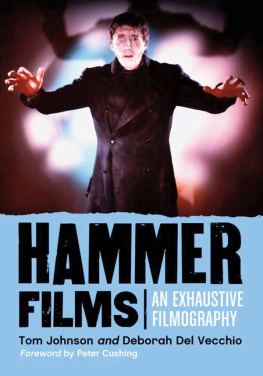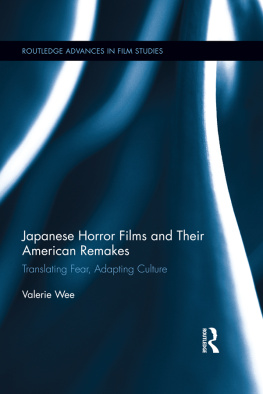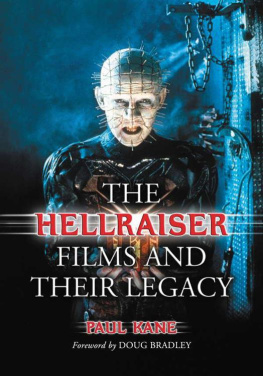
Table of Contents

Frontispiece: Portrait of Lugosi from Universal Studios Edgar Allan Poe chiller, The Black Cat (1934).
Library of Congress Cataloguing-in-Publication Data
Rhodes, Gary Don, 1972
Lugosi : his life in films, on stage, and in the hearts of horror lovers / Gary Don Rhodes with a foreword by F. Richard Sheffield.
p. cm.
Includes bibliographical references and index.
ISBN 0-7864-2765-5
1. Lugosi, Bela, 18821956. 2. ActorsHungaryBiography. 3. Motion picture actors and actressesUnited StatesBiography. I. Title.
PN2859.H86L836 2006
791.43'028'092dc20 96-46131
[B]
British Library cataloguing data are available
1997 Gary Don Rhodes. All rights reserved
No part of this book may be reproduced or transmitted in any form or by any means, electronic or mechanical, including photocopying or recording, or by any information storage and retrieval system, without permission in writing from the publisher.
On the cover: Bela Lugosi, circa 1930s (Photofest)
McFarland & Company, Inc., Publishers
Box 611, Jefferson, North Carolina 28640
www.mcfarlandpub.com
For Mom and Pop
Foreword
I must have been about 11 on one Saturday afternoon in 1948 when my usual matinee gangBrian, his little tagalong brother Mike, his sister Sue, and a few otherswere off again. This time it was to the Ritz at Wilshire and La Brea, to see Abbott and Costello Meet Frankenstein. We loved them. But this particular Saturday resulted in much more than I had ever bargained for. We went for the first time to see Lugosi, and boy, was I hooked. I longed to see more. I was fascinated, enthralled his hands, his voice, his gestures.
In the early 1950s, Belas career was practically finished. There were few of his films on the limited television programming of the time, and next to nothing at the theaters. By the time we got into junior high, a small knot of other kids who had also been zappedDave Katzman, Norman Fist, Tony Kemp, and Mike Spencerand I got together to see everything we could get our eyes on. So, since we could not see enough of him on the screen, we started a project to meet him in person.
Kemp had an uncle working on The Hollywood Reporter, and through him we were able to get a phone number that was supposed to have been Belas. After gathering much courage, and following a lot of You make the call No way, you do it What am I gonna say? the call was made, only for us to be totally deflated. It was Lugosis nephews home. But, he was totally cooperative and gave us his uncles correct phone number. We couldnt go through all that torment again, so we consulted with my grandmother, who wrote for The Pasadena Star. To her, it was no problem to call and ask Mr. Lugosi for an interview for her newspaper. But deflated again. Lugosi advised her that he had recently been ill and was not giving interviews (this was at the time his fourth wife, Lillian, had just left him).
More time more gathering together of nerves and Dave called, and I took the phone and said that we were a small group of fans. Lugosi quickly invited all of us to come on over to the apartment the following Saturday a seemingly endless wait for the day that finally came. We put together our collections of stills and organized a million questions. We were all about 14 by then, and Norms indulgent mother drove us to the Baldwin Hills. In the hallway: There it is, the door on the left You knock Hell no, you Okay, well knock together. When the door opened, we were staring upward, mouths agape, and there he was Lugosi.
This initiated a three-year glory trail that took us on undreamed-of adventures: lifting Belas water bottles into his dispenser, lunching on stale toast and goulash, visiting Lake Elsinore and the set of You Asked for It, taking a midnight tour of former residences, instituting a new and official fan club, campaigning for Universal to refilm Dracula in 3-D, getting coached in Lugosis acting techniques, watching his films with him on television, organizing his desk and being paid for it with articles of clothing from his films, transcribing his true story, viewing Moby Dick at the Pantages.
Through Bela I met Tor Johnson, John Carradine, Lon Chaney, Jr., Basil Rathbone, Mack Sennett, Jack Oakie, and many others. I ditched classes to visit the set of The Black Sleep, spent hours admiring Lugosis pipe collection, the summer cape, the winter cape, the Dracula ring, and the scrapbooks. I remember so well the unmade Ed Wood projects like The Vampires Tomb, reciting and recording scenes from Dracula, and visiting the Tarbox Theatre. There was Paul Marco and Eddie Wood and Forrest Ackerman and Hope Lugosi. There was scotch and beer and the unemployment office. And finally, there was his funeral. In addition to acting as a pallbearer, I tucked some of his El-Stinko, El-Ropo cigars into his pocket. We laughed and cried for three years. What adventures we had. What excitement. What a rare privilege.
Forty years have passed since our friendship took place, and I try to recall and share those precious moments. It saddens me that so many details are gone, as I see what would have given Bela unbounded joy: a resurgence of interest in his work. Though I knew him as a close friend, I have read the Lugosi writings from a myriad of perhaps well-meaning critics, experts, and intellects who analyze and dissect Belas personal and public life. I have found some of their opinions annoying, and others quite interesting and thought-provoking. But to me, as an adolescent, he was an icon. Lugosi definitely remains one of a kind.
I thought I knew so much about my friend through my own experiences and the things Ive read, ranging from Lugosis own scrapbooks to magazines like Famous Monsters and all prior biographies. Yet in reading Rhodess work, I couldnt put it down. Theres so much here that hasnt been told yet. It even accompanied me to the bathtub. Its a must for any Lugosi fan and also for any serious student of cinema history.
F. Richard Sheffield
Len, Guanajuato, Mexico
1995
Preface and Acknowledgments
Henry Miller once likened memories to images that have lost their vividness, like time-bitten mummies caught in a quagmire. Yet some of my early cinema memories, while fragmented, retain their strength. Three women, dressed in white and swaying at the command of a figure dressed in evening clothes and cape, illuminated on a small kitchen television as glowing jack-olanterns lit the neighborhood streets. Pudgy Lou Costello, shivering as the same actor arose from a coffin in McDougalls House of Horrors into a Saturday morning television. Sunday afternoon with barbecue and Mom and Dad and The Wolf Man (1941). Images like this remain not merely as extensions of old nightmares, but they also spark the same intense curiosity that sends characters in such films through secret doors no one in his or her right mind would ever open.
My oldest sister, Lee, once purchased a childrens paperback on horror films at a grade school book sale. Even though I could not yet understand the text, the photos etched themselves into my mind. Later, as I began to read, I discovered a slim volume on Dracula, replete with stills of Bela Lugosi. The name struck me as unforgettable, and my library card soon obtained for me not Dr. Seuss but volumes on vampire legends and horror stories. And, even if I became addicted to flashy science fiction films at the local theater, the black-and-white character of Universals horror films danced on in my dreams, strengthening their grasp.
Next page
